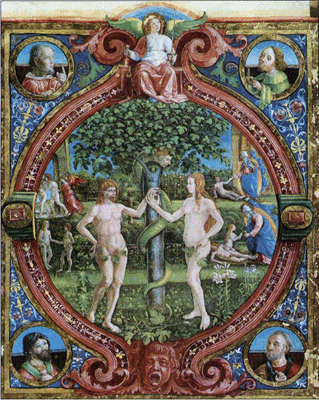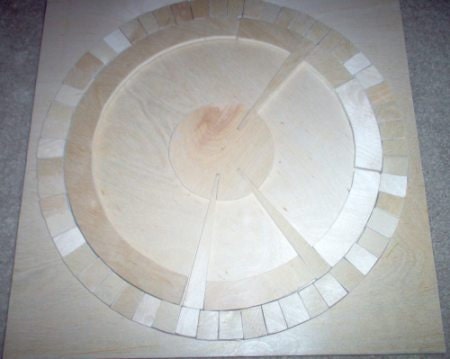These past couple of week's my Sunday and Wednesday atrium groups have been studying the account of Creation and beginning work on the Typology of Creation timeline.
As we explored the reading together that first part of the timeline ("Creation: the Account"), and reading how God created man:
God created man in His image,
in the divine image He created him;
male and female He created them.
~Genesis 1:27~
The repetition here struck me.
Some background:
- In our original reading, we share different spots we noted repetition - the children usually focus on words or phrases. We discuss what these repetitions reveal.
- Is there anything we hear just once? What could that mean? (in this case, the Hebrew word for "create" is used ONLY in this section of the Bible - specifically to God's power of creation - so this is powerful for the children to begin exploring the original language)
- About a year ago, at home, my son and I did a middle school level Psalms study, with a beautiful booklet from a very non-Catholic publisher - but this booklet was RICH and Catholic companies should take notice! Anyway, we learned the basics of Hebrew poetry and how to apply it to understanding the meaning of various Psalms, but also other passages of the Bible. This study prompted my son on a personal in-depth study of the Psalms - but that is another post on a different blog ;)
- Hebrew poetry has lines that "rhyme" by repeating - repeating phrases or repeating *ideas* - that is the key one here. There are many more aspects to Hebrew poetry, but that is the crucial one right now.
- These meditations are not just about the children delving into it, but also about the adult exploring with the children. At level 3, we don't have all the answers and the children appreciate when we explore with them, acknowledge their ideas, share our experience and expertise where appropriate and guide the children's mind towards proper conclusions, without just spoon-feeding them.
So as I read that passage for the umpteenth time in 2 weeks, it suddenly struck me! I pointed out to the children what I had learned about Hebrew poetry - and I asked them - what is repeated here?
- created is on each line
- image is used twice
- it says the same thing 3 times, but He didn't make man three times. That's odd they said.
"Ah!" I said, "but each line says the same thing!" They didn't get it, but were very curious. I had some raised eyebrows like I'd just sprouted another head. Yep, they were curious but skeptical - I loved it!
Look at each line. Look for the actual repetition from one line to the next - and what does that reveal about God?
AH - SIGH! I love it!
Have I lost you yet?
Have you ever noticed that man and woman are not complete without one another? That to bring new life into the world and to support that life they need each other? And who is the only one who can actually create that new life? Everything comes from God, and man and woman are so different, yet their perfections are only found in God the creator. See this section of the
Catechism of the Catholic Church for more to ponder:
http://www.scborromeo.org/ccc/p1s2c1p6.htm
Ok, so right now is not the time for me to get into the adult level portion of this study - let's just look at what I experienced with the children.
First we broke down the phrase in each line to see where the parts where - we found 4 parts in each phrase.
- God -------- created -------- man -------- in His image,
- in the divine image -------- He -------- created -------- him;
- male and female -------- He -------- created -------- them.
Then I asked - what parts are easy to see are repeated? And what is left? This was a verbal discussion, but for the sake of us here, let's physically re-arrange just to align the parts that "rhyme" (by Hebrew poetry definition):
- God -------- created -------- man -------- in His image,
- He -------- created -------- him -------- in the divine image;
- He -------- created -------- them -------- male and female.
Part 1: HE
God is considered "He" - an interesting symbolism here (not shared with the children) is that fathers control the gender of their children - only they have the two different chromosomes to offer (x, y) where women have just one variety in duplicate (x x). Interesting that ancient languages match modern science. Hm. ;)
For the children: we call God Father because of his protection, His discipline, His headship.
Part 2: created
We already spoke about the fact that the Hebrew word for create is only used here and it refers directly to God's power. This word, used in repetition within this verse indicates that the human race did not come about by any power of its own, but through the direct power of God Himself. The children spoke of adam and adamah because we had already discussed these words.
(ok, I've got to say it just ONCE - I won't discuss it in the atrium - or let the children discuss it --- but anyone who has seen Battlestar: Galactica knows that the commander's name is William Adama - now some of the children knew that right off - and I am so grateful I knew right away what made their eyes light up, because I could just nod and say, "You've heard this name before and we can discuss it separately" (add understanding smile) - and I just say to them later - think about the nature of that tv series - what could that name chosen by the screenwriter reveal about the storyline, the meaning, etc. One of the 3 boys involved said, "Wow. I thought it was just a good show. Now I have something to think about." He liked that! I won't ask why children this age were watching this show.)
Part 3: man/him/them
(all the information in this paragraph came from the children, including the questions asked)
man, then him, then them. "Man" must be referring to mankind - humans in general, but also to Adam because he came first - did God know that He would be creating Eve? Yes, because it then refers to "them" meaning both of them - and maybe even to all of us because He is still creating people today.
Part 4: in His image/in the Divine image/male and female
I did feed a bit more information to the children - that man and woman are referring to physical bodies, while male and female are referring to the very being - so what could this refer to? Their souls the children responded right off.
Ah! I said. That's interesting. Let's look at the first two phrases here. If we are created in His image, in the Divine image, does that mean God has eyes, mouths, hands, heads, feet, etc.? Well, responded some of the more astute children, He has our eyes, mouths, etc to do His work here on earth. Yes, that is wonderful, I said - is there something more to learn here? Each of us look a bit different; some people don't have some body parts for one reason or another - are they less human? Less worthy of serving God? ABSOLUTELY NOT! the children responded. So this image of Him - is it in our physical bodies?
NO! It is in our souls.
Oh. I said. And the essence of our being - male and female - is in our souls.
They all got quiet, clearly pondering.
What does this mean?
We've already said when things are repeated many times in the Scriptures, they are critically important. And this is repeated three times right here, in one verse alone. What does it mean?
One child ventured to say, "It means that our very being who we are, as male or female, is actually the same being as God - that we come from Him directly, when He breathed the breath of Life into us, it was HIS life, HIS being - like, when we read "My body is a temple of the Holy Spirit" - this is saying the same thing. I am a temple because God made me to hold His own being. And that is me. It is like we all have a bit of God in us. Because we have His image."
While stumbling and perhaps not 100% how an academic theologian would phrase it, this child brought me to tears.
"Do you believe that?" I asked. "That you are truly made to be God's temple?"
Yes.
I just smiled.
(I was trying SO hard not to cry!)
In other news, has anyone else noticed, besides my children in these two atrium sessions that Adam's name is NOT mentioned anywhere until after the expulsion from the garden, the naming of Cain and Abel, the murder... he was a grandfather several generations down and it was only in fathering Seth that Adam was finally named? The Scripture keeps saying "man" ("ish") until that point - BUT if we were reading in the original language, Adam would have been named in verse 2:7 and it would be presumed you know his name from there, despite the use of ish. Eve isn't named at all until after the expulsion (except from reference of "ishah" - she is named in verse 3:20. My children found this fascinating.
(and yes, there was a group of them off in the corner reading ahead until they found his name - they found a few other interesting points too - like Adam being a grandfather to many generations before having Seth - not missing a beat)
:)
 One evening in the level 2 atrium, a revelation took place:
One evening in the level 2 atrium, a revelation took place:



















